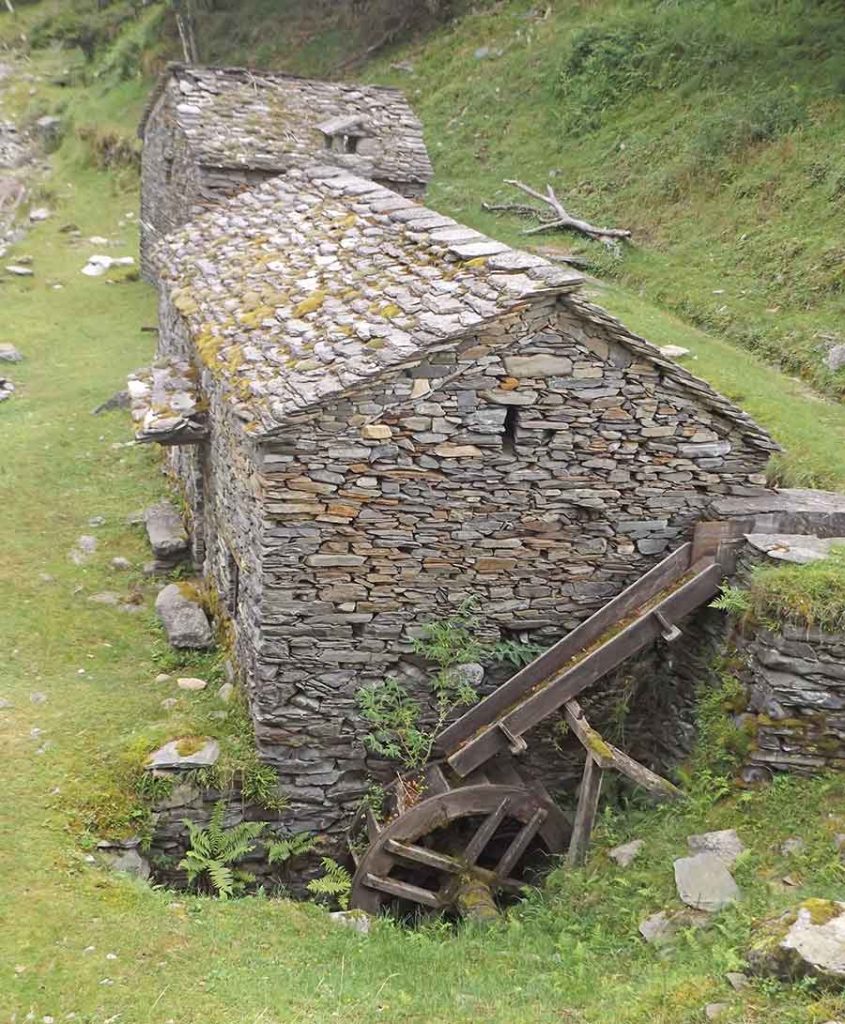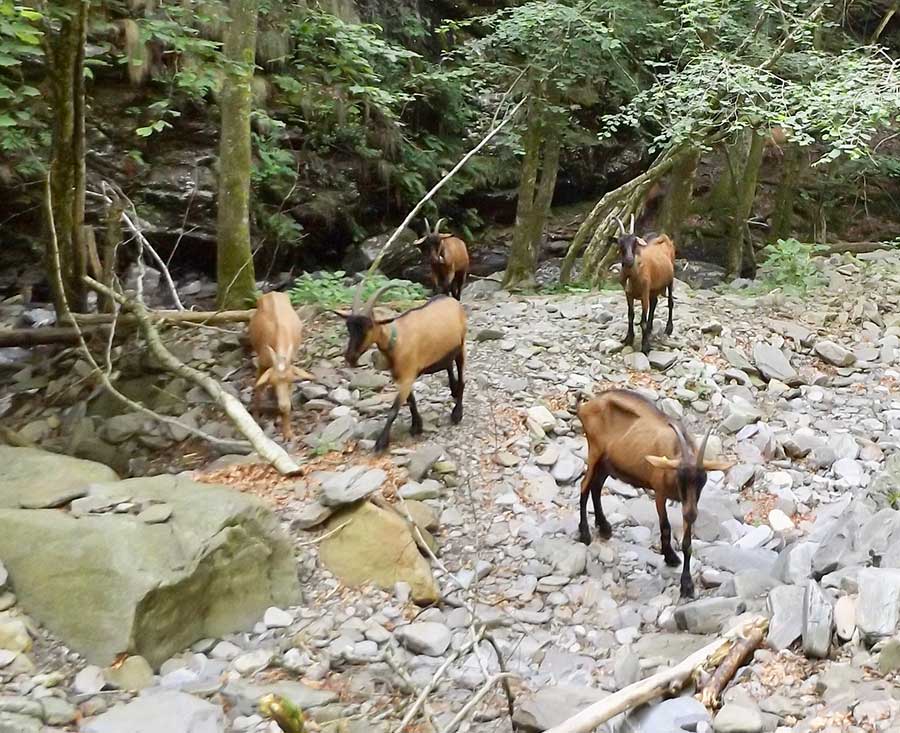Just a short walk from the bridge to Piero is a turn to the famous Mills of Piero, the Mulini. Built of local stone in the 18th century to use the strong flow of the Giona torrent to turn the timber wheels that would turn the stone wheels to grind the local produce like wheat and chestnuts, it was the reason for small villages like Piero, to house the workers.

People would bring their grain and nuts from both sides of the slopes, when a stone bridge, now gone, connected the sides of the river. You can see here that they diverted the flow of the river to the mill wheels. It is overwhelming to see the sheer amount of stones carried, for buildings, paths and walls, and the skill of the dry stone laying.
So even before the British were invading Australia, the mills of Piero were at work.

Holding weirs were also built of stone.

I found I could not see enough of the intense green of the mossy roofs and walls and the soft light-filled green forest. I went up there three times to bathe in its magic. Sole abandoned stone huts kept appearing further up the hill; what were their stories?

The rushing of the river meant it was never silent, but one time we heard an ongoing tinkling approaching.

Crossing from two sides of the creek, a flow of small goats kept daintily picking their war past us. Most wore goat bells, most had horns, most were brown, some were cream. We counted about 50, and later we would eat the wonderful cheese Alessandro makes from their milk.

One goat stood as if on guard until the whole flock had passed, then stepped off his rock to join them in the enchanted forest beyond.

Like some of our rainforests, this is a mossed and lichened green world. Even the light through the trees is green.

So many mosses of every shape and shade of green…

We walk up beside the stream as far as our friendly guide Gigi decides is safe; while the ancient bridge is further up, the way past this first canyon in the river is too dangerous, ‘pericoloso’, for us, says Gigi, demonstrating how narrow and steep and broken the path gets. Gigi has good English so could translate what his friend Ambrogio said as he identified wild plants; often it was clear, as the Latin names are the same.

My images of this green valley and my imaginings of the lives lived here until less than my lifetime ago will stay with me and enrich my world forever.

I had loved the Heidi story as a child — still do — and now I have seen the goats, and later even a goatherd, I can see her on these meadows below the Alps. Although somehow Julie Andrews keeps intruding…

Thanks Wendy; yes Piero is still my favourite too. A few more posts to come on that.
I won’t get to most of the famous places… and the heatwave makes it hard to walk about after 8, but am drinking it all in!
Hi Sharyn,
For some reason until today I hadn’t seen your posts since June 26th.
So it has been great to follow your wanderings and wonderings all the way from Cremona through Parma, Milan, Luino, Lake Maggiore and up into the beautiful tiny village of Piero.
Of all the places described this one appeals to me most. ?
How lovely to have time to travel at a slower pace, to savour the sights, sounds,smells and tastes… and of course take lots of wonderful photos.